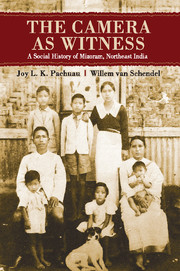Book contents
24 - Conclusion
from IV - Mizo Modernities
Published online by Cambridge University Press: 05 May 2015
Summary
Dizzying cultural innovation is not the first thing that comes to mind when outsiders contemplate the hill societies of the borderlands of India, Burma and Bangladesh. And yet, this book has documented astonishing dynamism. Mizoram is nothing like the popular image of these societies – isolated, traditional ‘tribal’ communities in need of a leg up into the modern world.
We have presented aspects of the spectacular transformation of Mizoram society from an assemblage of stateless peoples in the late nineteenth century to the present. It is important to stress the introductory nature of our venture: Each aspect we presented could do with much more elaboration. For example, we could delve more deeply into how regional ‘visual cultures’ transformed, together with webs of ideas and technologies, and how they contributed to the historical reorganization of knowledge. Our purpose was not to write a comprehensive history of Mizoram but merely to present a preliminary exploration of how visual material may help us trace certain facets of historical change. The same caveat holds at the level of individual images in this book. Each of these can be contemplated, contextualized and analysed in much more detail than we have been able to do here.
We conclude with three short observations. First, the vernacular photographs that we have collected from many different sources reveal traces of the past that are hard to evoke in other ways; they provide access to decentralized forms of knowledge. We hope that the encounter of these forms of knowledge with dominant narratives of history will generate novel and productive research approaches. This, more than anything, would justify the principal intervention of our project: moving these images from private collections into a book-length presentation.
Second, our project indicates the power of photography: It can act as an effective ‘avenger’ of the history it mediates. In recent times, many scholars have employed photography to great effect as a nemesis of colonial and civilizational narratives.
- Type
- Chapter
- Information
- The Camera as WitnessA Social History of Mizoram, Northeast India, pp. 423 - 424Publisher: Cambridge University PressPrint publication year: 2015

